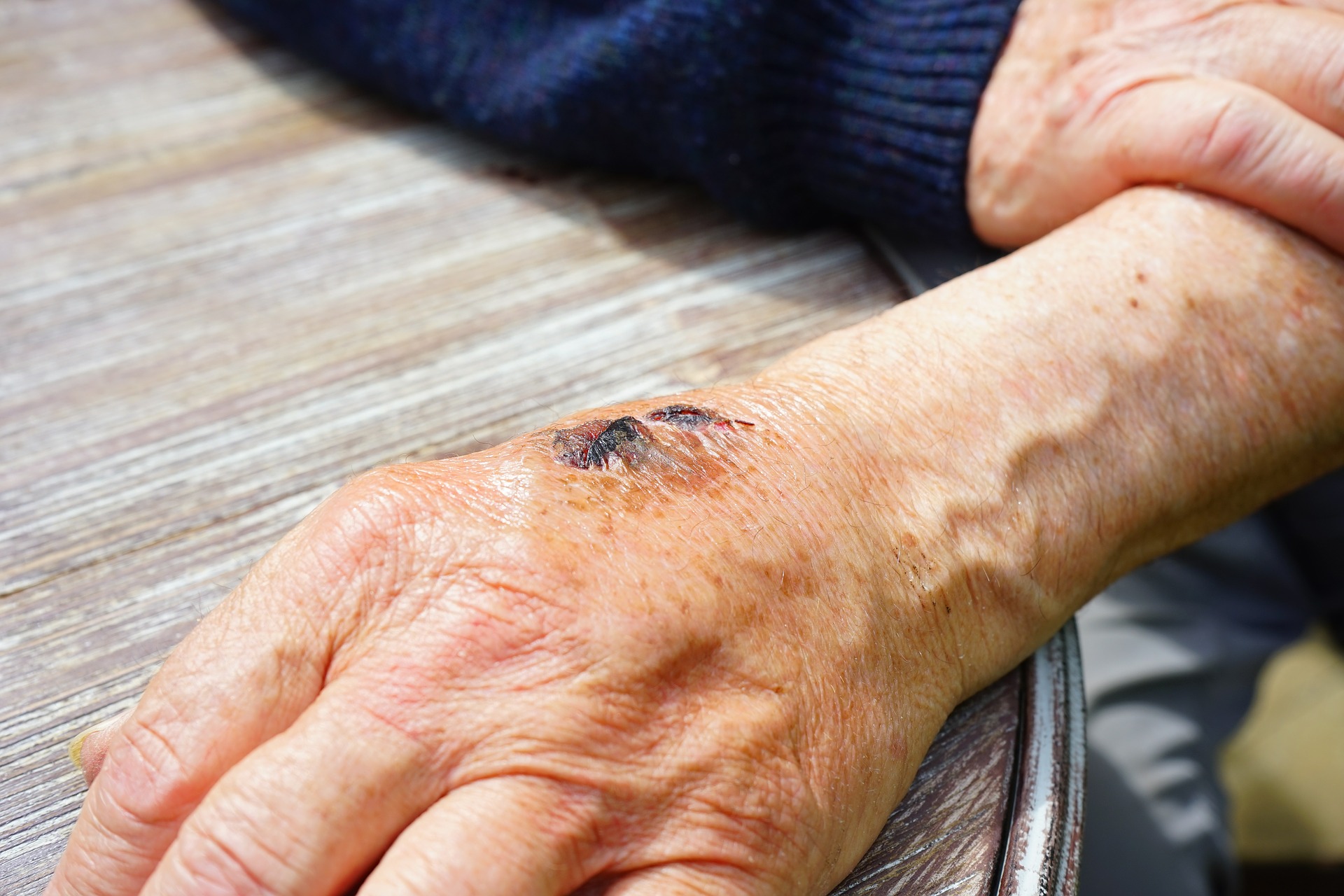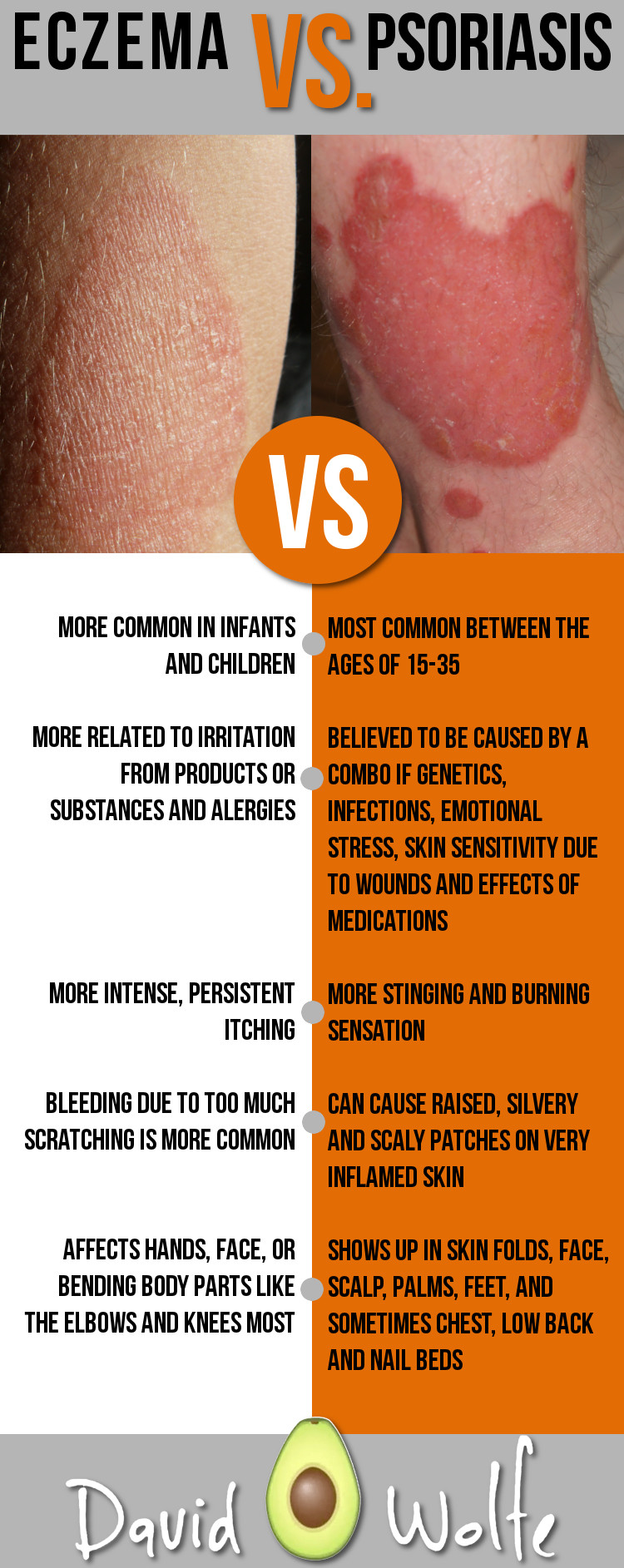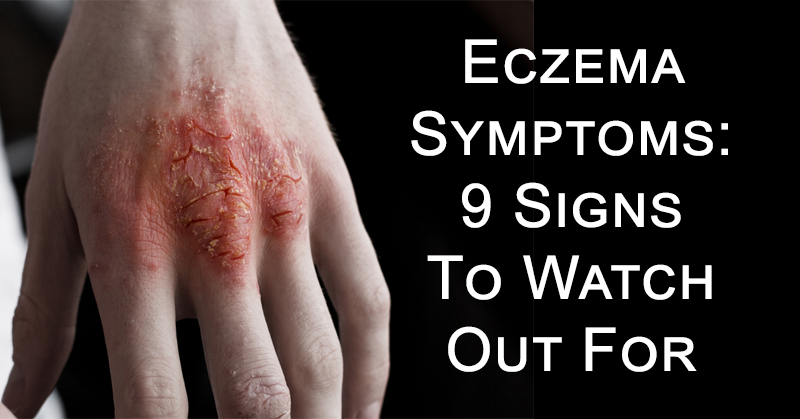Eczema is a condition that causes the skin to become red, itchy and inflamed. Eczema symptoms can manifest on many parts of the body, but regarding babies, inquiring parents commonly search “eczema on face”. And eczema itself is extremely common: over 30 million Americans have some form of this skin condition. (1)
Its symptoms can either be short-term or chronic, though most patients experience a return of symptoms, spanning over the course of several years. (2)
Here are eczema symptoms you should look out for: (3)
1. Inflamed skin
This is one of the most common eczema symptoms. The skin might appear appears red and swollen. Eczema on arms or the hands are two of the most likely locations of an outbreak. (4)
2. Itchiness
This is another one of the most common eczema symptoms. With itching comes the temptation to scratch the skin, but this actually makes irritation worse! (5)
3. Blisters or crusty patches of skin

These might crack open, ooze and become scaly. You might also see some peeling and flaking due to severe dryness. With seborrheic dermatitis, which is eczema on the scalp, dandruff in common. (6)
4. Cuts and cracks in the skin
This is another result of dryness, which can lead to bacterial infections. (7)
5. Changes in skin color and texture
You might see the skin becoming rougher, darker and thicker. (8)
6. Sensitivity to products
Do you notice a flare-up after using products such as shampoo, lotion and cleansers? This could be indicative of eczema. (9)

7. Burning
This occurs because of the continuous irritation of exposed, raw skin.
8. Stress
When symptoms become severe, some patients may run into secondary problems. These include difficulty concentrating at work or school, trouble sleeping, or, due to the red, inflamed skin, embarrassment. (10)
9. Allergies
Atopic eczema, which is caused by allergies, can occur along with other symptoms such as a fever, fatigue, asthma or respiratory issues. (11)
Here’s how eczema wreaks its havoc:
Eczema affects the most outer part of the skin called the corneal layer. (12) This layer belongs to the part of the skin called the epidermis, which is situated on top of the middle layer and the innermost layer. The corneal layer serves to protect the body from harmful bacteria. Being so, it is forever renewing itself, shedding old damaged cells and growing new, healthy ones to replace them.
Eczema causes can be a little tricky to nail down. However, when someone has eczema, the process of shedding and renewing corneal skin cells is disrupted.
Eczema Causes and Risk Factors
Reasons for this skin disruption vary. It could be mutated gene that results in reduced production of a protein. This protein helps maintain the corneal layer. Cracks in the skin can also be a cause, wherein a bacteria called staphylococcus aureus triggers an inflammatory response. Allergies to certain foods, chemical exposure in perfumes or soaps, and toxicity such as smoking or pollution could cause eczema.(13) Even overuse of antibiotics can contribute. (14) A cold climate might make symptoms worse. (15) And studies have found mixed results as to whether or not vaccines are related to eczema outbreaks. (16)
An eczema cure does not exist, though treatments are available. (17) Research shows that breastfed babies may have increased protection against allergies that can cause skin conditions. (18)
As there are many types of this condition, methods for eczema treatment might be treated in different ways. These methods include skin ointments, medicated creams, and specialized shampoos (for eczema on scalp). Wool and other fabrics may trigger an outbreak. (19) Above all, do not itch an outbreak of eczema, as this will only make it worse.


